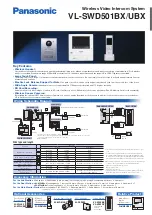
RedLab 1008 User's Guide
Functional Details
23
Counter terminal
The input connection to the 32-bit external event counter is made to the screw terminal labeled
CTR
. Refer to
the
pinout diagrams
on page 18 for the location of this pin. The internal counter increments whenever the CTR
input voltage changes from <1 volt to more than 4 volts. The counter is capable of counting frequencies up to
1 MHz.
Accuracy
The overall accuracy of any instrument is limited by the error components within the system. Quite often,
resolution is incorrectly used to quantify the performance of a measurement product. While "12-bits" or "1 part
in 4096" does indicate what can be resolved, it provides little insight into the quality of an absolute
measurement. Accuracy specifications describe the actual results that can be realized with a measurement
device.
There are three types of errors which affect the accuracy of a measurement system:
offset
gain
nonlinearity
The primary error sources in the RedLab 1008 are offset and gain. Nonlinearity is small in the RedLab 1008,
and is not significant as an error source with respect to offset and gain.
Figure 11 shows an ideal, error-free, RedLab 1008 transfer function. The typical calibrated accuracy of the
RedLab 1008 is range-dependent, as explained in the "
Specifications
" chapter of this document. We use a ±10
V range here as an example of what you can expect when performing a measurement in this range.
-FS
+ FS
Input Voltage
0
4095
Output Code
2048
Figure 11. Ideal ADC transfer function
The RedLab 1008's offset error is measured at mid-scale. Ideally, a zero-volt input should produce an output
code of 2048. Any deviation from this is an offset error. Figure 12 shows the RedLab 1008 transfer function
with an offset error. The typical offset error specification on the ±10 V range is ±9.77 millivolts (mV). Offset
error affects all codes equally by shifting the entire transfer function up or down along the input voltage axis.
Summary of Contents for RedLab 1008
Page 1: ......












































